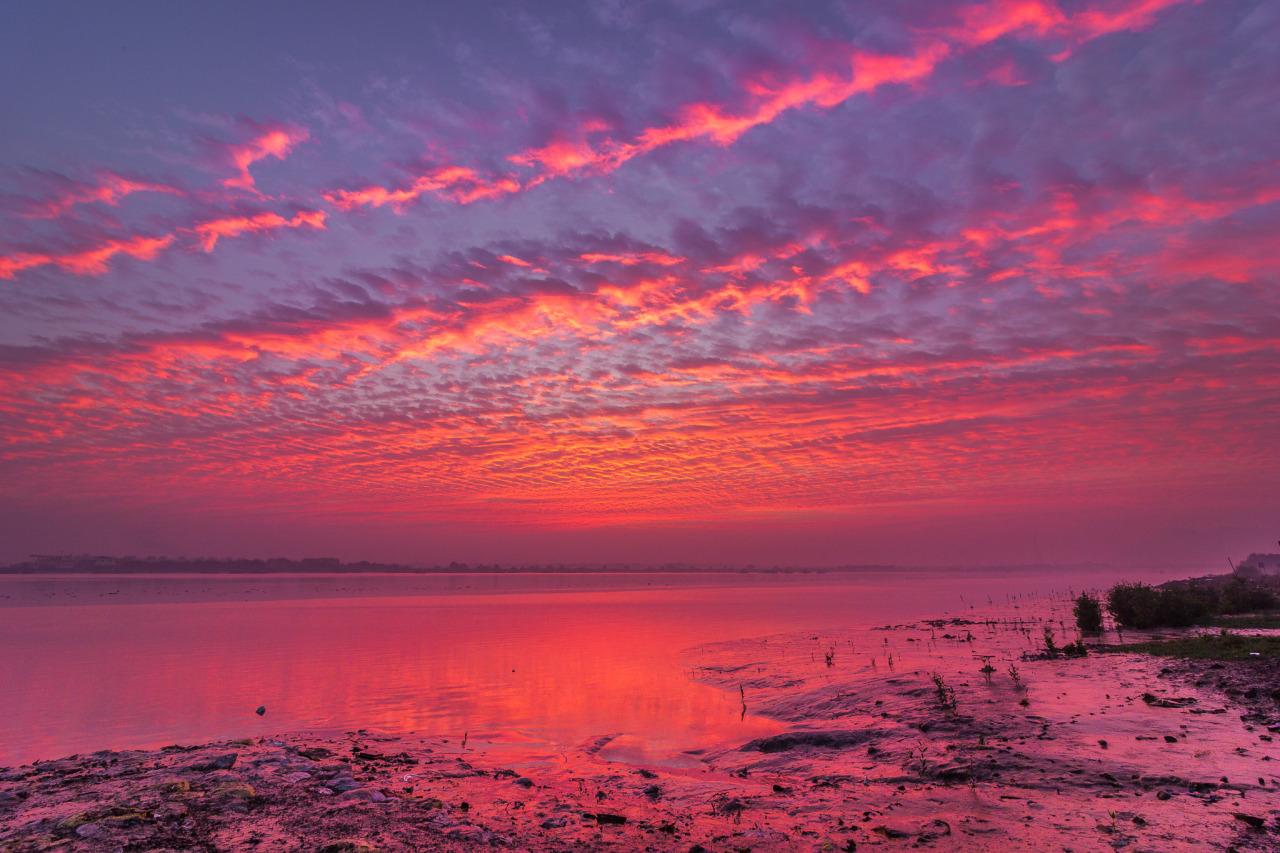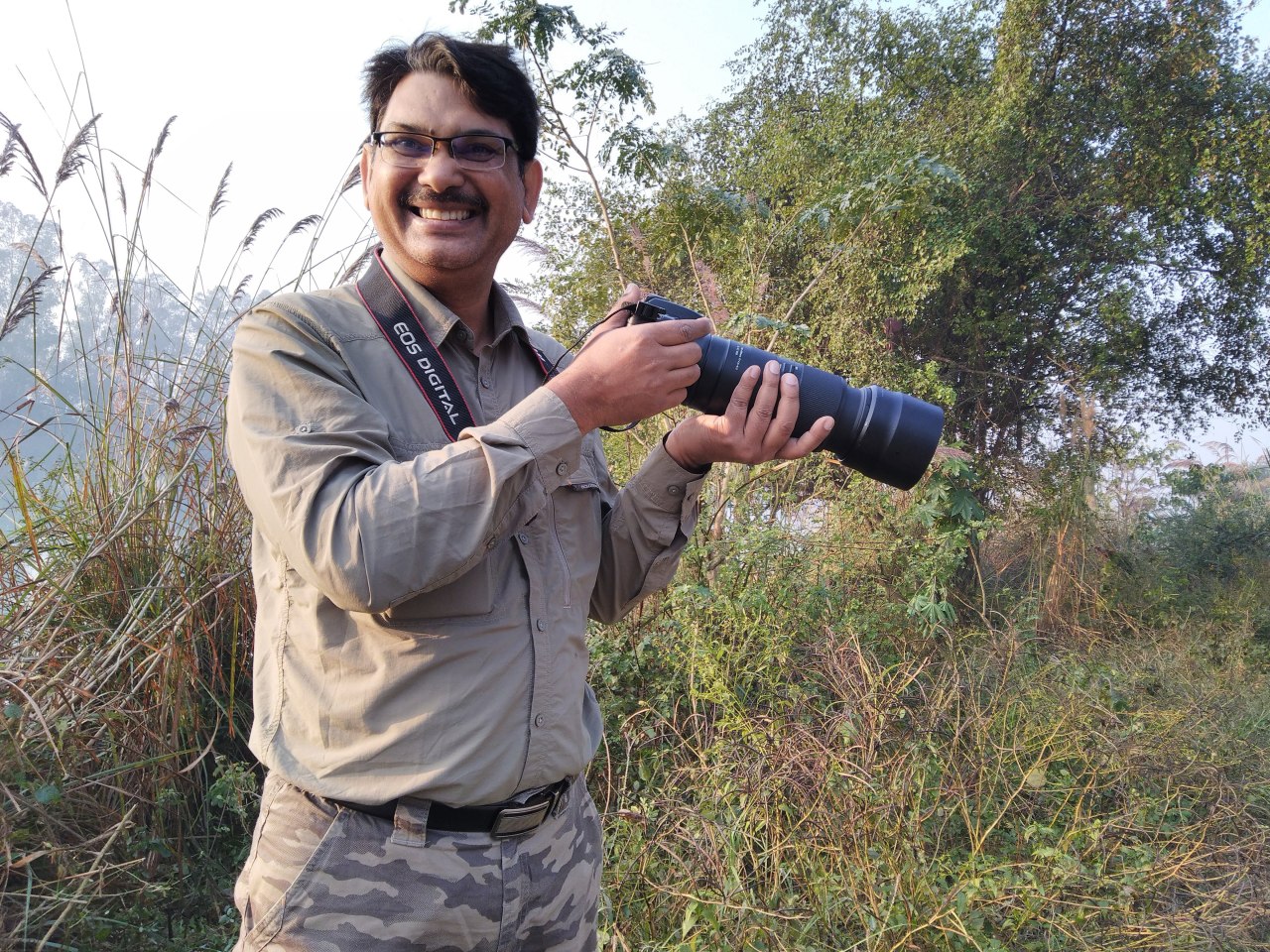Mudskippers in an Indian Creek - Observation of the Week, 11/10/18

This group of Boleophthalmus dussumieri mudskippers, seen in India by @anil_kumar_verma, is our Observation of the Week!
“I believe we are all born in love with nature,” says Anil Kumar Verma. “Who among us doesn’t like to be in peaceful environment of forests, mountains & lakes. While I was a kid, used to live near ‘Western Yamuna’ canal in Yamuna Nagar, Haryana, India. This canal was dotted with trees on banks and we would go chasing butterflies & birds. Somewhere in search of a good life, this got left behind. This interest got re-kindled in 2012, when I got my DSLR. This gave me the power to capture in a good way whatever I observed.”
Anil now often goes out to photograph wildlife in the Yeeor Range as well as the Nagla Range in Sanjay Gandhi National Park and makes other excursions with groups of fellow nature photographers. He has also made several visits to the bank of the Vasai Creek near Kolshet village at dawn to capture the sunset (see below), and this is where he’s seen mudskippers mucking about. However, Anil has often lacked the proper lens with which to photograph them.
This time [however], I had a visit along with photo enthusiast buddies and had the luxury of a 100-400mm lens. And after so many years, I finally captured my observation of mudskippers...This was the last observation to be made and captured. Loved the way these creatures were present in hundreds and moving around in mud. The shining blue eyes catch one’s attention and it took quite some time getting it right.

Anil posted his mudskipper photos to iNaturalist and Gianluca Polgar (@gianlucapolgar), a mudskipper specialist from Italy, idenitfied as Boleophthalmus dussumieri. I asked Gianluca about this species, and he tells me it’s one of three fascinating species that live along the coasts of the Persian Gulf and the Arabian Sea, feeding on “microscopic and filamentous algae on the surface of the mud during low tide, scraping the mud surface using their comb-like lower-jaw teeth and characteristic side-to-side head movements.”
They make burrows in the mud (as do other mudskippers) which can be over a meter deep; useful for hiding during high tide. But at low tide the fish come out and, according to Gianluca, “dig a shallow pool around one of the openings that does not dry out during low tide, and where the concentration of microscopic algae happens to be higher... therefore, they appear to cultivate small muddy gardens!” The mudskippers also engage in territorial disputes, especially in areas of high density, such as Kuwait Bay, and Gianluca tells me
apparently due to these high densities, the mud dug by each individual and accumulated around the defended area builds up with the mud dug by the neighbours and is ‘cooked’ under the strong sun, thus creating a peculiar pentagonal pattern on the mudflat which resists to flood tide currents and is visible at a large distance.

Anil (above) first learned about iNaturalist in a Facebook post by Roger Kendrick (@hkmoths) and says “now, I’m trying to put most of my observations here. This is helping me put all of them in one place. Before this, I had so many pictures without species or family name. The iNaturalist community has helped me document most of it...iNaturalist’s efforts in building a community of observers and identifiers has brought a renewed focus in my observations.
I would say, I started my journey as a photographer, somewhere, somehow getting to know what I’ve captured. iNaturalist is giving me a direction towards being a naturalist, making me understand the natural world, its diversity.
- by Tony Iwane. Some quotes have been lightly edited for clarity and flow.
- Amazing footage of mudskippers fighting, burrowing, and more.
- Check out Gianluca’s mudskipper website.
- Here are the most-faved mudskipper observations on iNat.




Comentarios
It's fun to meet someone, or even hear from someone who has the same interests. Probably, like a lot of people reading this, I wish I could tag along on your trips to photograph nature. I can relate to how thrilling it must be to use an EF 100-400 (presumably one of the "L" lenses). That's a lens I really want too. But I have some low cost alternatives. All you need is a little skill and a lot of luck...But, oh to own the EF 100-400mm F/4L Mark ii...! Still, we will find a way to get our images! Have fun! Great intro to mudskippers and avid nature photographers!
We are proud of u Anil Kumar Sir
@arthurmacmillan , It's always a pleasure to hear from someone with same interests. iNaturalist is a great platform to find out buddies in your location & its always better to enjoy nature with like minded people.
Also, This is a Tamron 100-400mm, as you can see in the picture at 1/3rd price of Canon 100-400mm.
Thanks for commenting.. Keep shooting & sharing..
@jagdishsupekar , Thanks Sir.. Good to hear from you..
What a happy story, thanks for what you do.
Yet another spectacular example of how so many folks around the world enjoy these global observations -- we in Texas enjoy watching what you see there in India! Keep it up. :)
How cool, before I started herping I was obsessed with Mudskippers. Keep up the great work!
These fishes were once in abundance in all water bodies in deep tirumala tirupathi hills especially in water falls, unfortunately now disappeared due to invasive species.
Please save them or help them come back.
@anil_kumar_verma I hope you are well! Well, I did it! I spent 3x more than necessary and got the EF 100-400mm IS USM MkII! Actually, I got in on a good deal on a brand new Mark II, and only paid probably 2x the price of your Tamron. Don't think I am a lens snob. I have more Tamrons than any other make lens. I have always been the kind of fool who falls in love and gets hurt. Only, it has been over a year and my 100-400mm and I just seem so right, that I don't think we will ever part!
@arthurmacmillan Congratulations !!! I must say Canon is anytime a great acquisition if budget is not a constraint. Enjoy the shoots & keep sharing..
Agregar un comentario